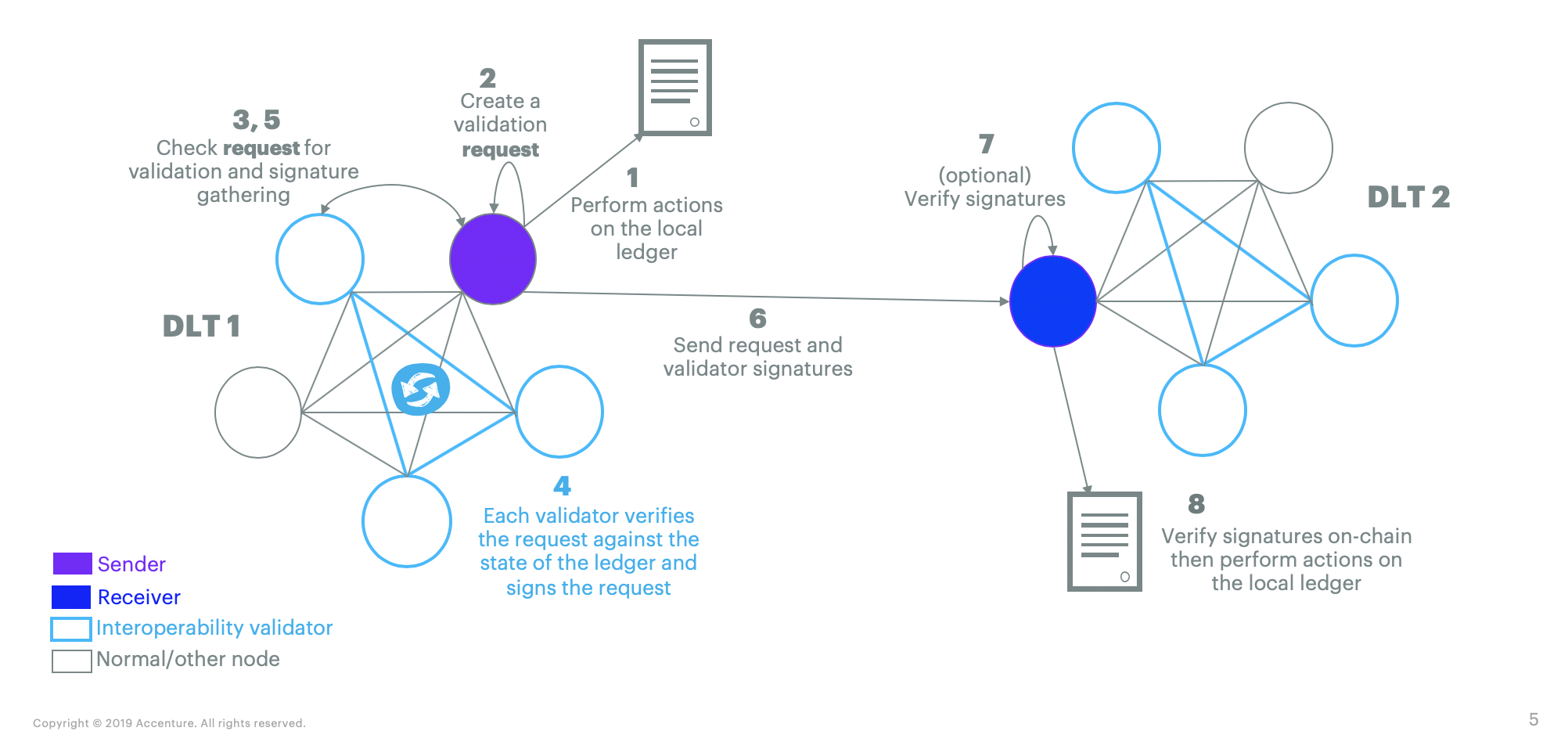Hyperledger Cactus
Short Description
A new approach to the blockchain interoperability problem
Scope of Project
Define a communication model to enable permissioned blockchain ecosystems to exchange any on-chain data or custom assets (fungible/non fungible) independent of the platform (e.g. Hyperledger Fabric, Quorum, etc.) without a middleman. This lab project will implement an interoperability validator network, which is an overlay network of hand-picked actors that will validate and sign data before sharing.
Blockchain Interoperability Space
If you look at the Blockchain Interoperability space, several different approaches have been proposed. Among the existing contributions, we identified two main ways to solve the interoperability problem. The “connector approach” focuses on building transfer protocols for non-trusted blockchain gateways (e.g. Interledger). The “blockchain of blockchains approach” proposes a central blockchain “hub” to connect multiple blockchain “zones” together (e.g. Cosmos).
This lab project proposes an alternative to these models, and it is designed specifically for permissioned blockchain networks, but later expanded to permissionless ones as well.
Documentation
How It Works
Hyperledger Cactus introduces an “interoperability validator” overlay network for each of the interoperable blockchains. Interoperability validators are known or broadly discoverable by the ecosystem and are typically participants already taking part in the governance or consensus. Interoperability validators will collectively handle export requests from local nodes by verifying against their version of the ledger (steps 1 to 3). Each request is answered by a (configurable) minimum quorum of validator signatures necessary or rejected as fast as possible (steps 4 and 5). The network can continue working even if some of the validators are down, or not participating, but assuming the minimum quorum can be guaranteed. Messages certified by a distributed ledger’s transfer validators can be delivered by any secure off-chain communication system (step 6). A proof coming from a foreign distributed ledger can be verified against the public keys of the transfer validators of that foreign distributed ledger either locally by the recipient or using an on-chain logic –- typically smart-contracts (step 7 and 8)
Note that Hyperledger Cactus follows Semantic Versioning and as the software is pre-1.0, backwards compatibility is not guaranteed between versions
Contact
We welcome your questions & feedback on our chat channel.
Contributing
We welcome contributions to Hyperledger Cactus in many forms, and there’s always plenty to do!
Please review contributing guidelines to get started.
License
This distribution is published under the Apache License Version 2.0 found in the LICENSE file.
Initial Committers
Sponsor
Hart Montgomery (hartm) - TSC member
